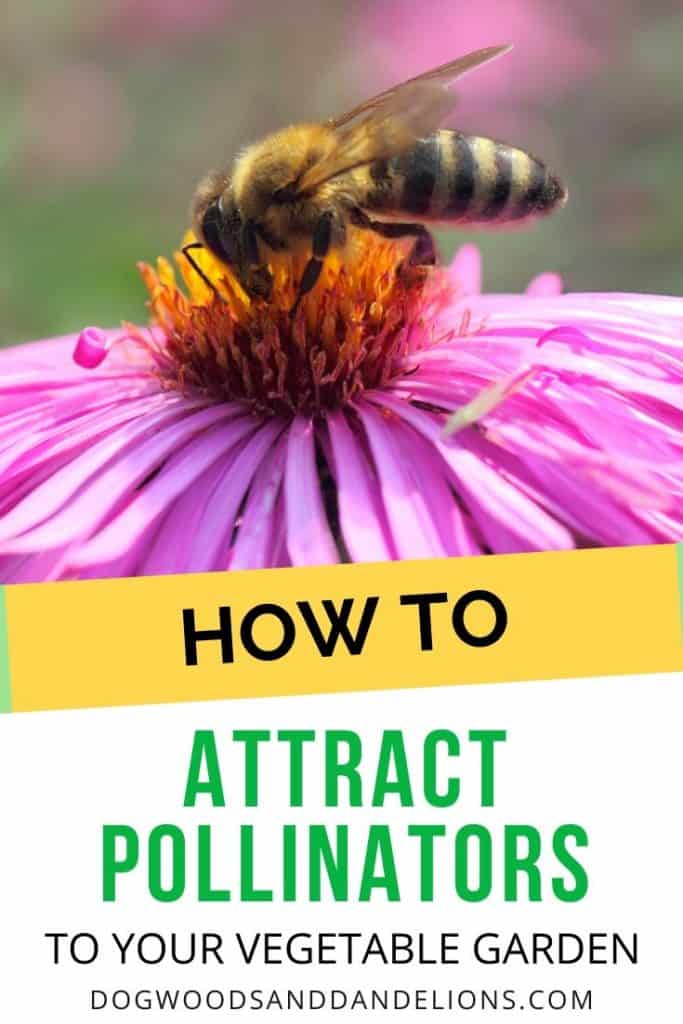How to Attract Pollinators to Your Garden
Attracting pollinators will help ensure a successful vegetable garden. But how do you get the bees and other pollinators to show up? These tips will help you attract more pollinators to your garden.
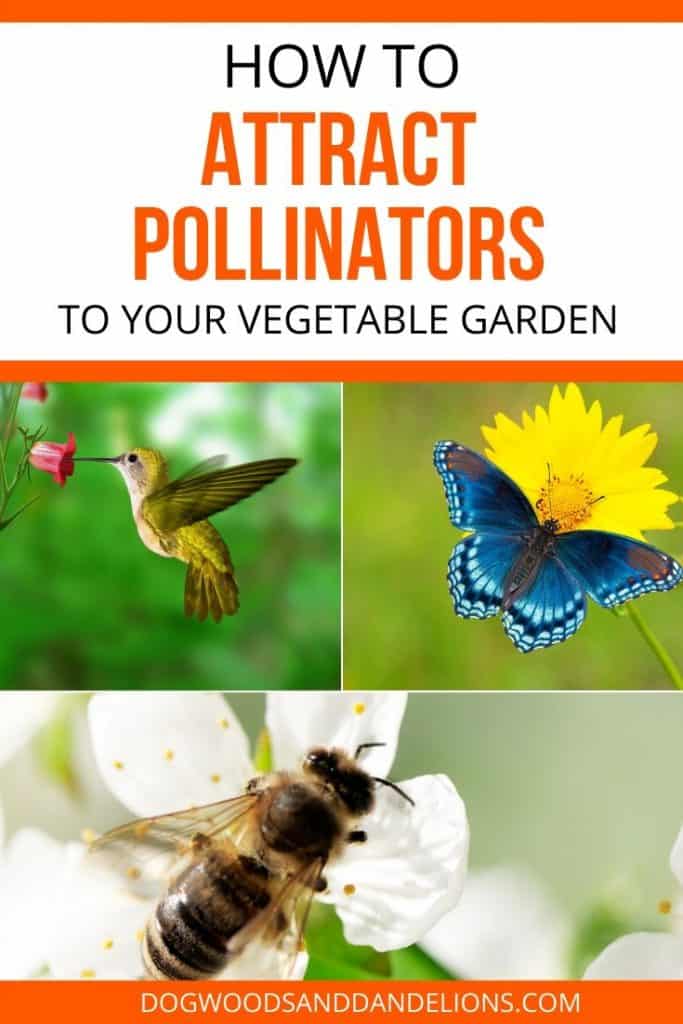
What Pollinators Are Best?
Let’s cover a few things about pollinators. While bees are the insects that people most often think of when they think of pollinators, there are many other insects and animals that will pollinate your vegetables and fruits as well.
Butterflies, ants, moths, wasps, flies, and beetles can all help pollinate your vegetable garden. And surprisingly, even bats and birds can help with the pollination process.
This post will focus mostly on bees, birds, and butterflies as they do the majority of the pollination and are the easiest to attract to your garden. And many times, what you do to attract one pollinator will be helpful for attracting other pollinators too.
Affiliate Disclosure: Please note that some of the links in this article may be affiliate links and I may receive a small commission if you purchase something through a link. It will not change your cost. As an Amazon Associate, I earn from qualifying purchases. For more information, see my disclosures page.)
Add Flowers to Your Vegetable Garden
One of the best ways to attract pollinators is to add some flowers to your vegetable garden. But not just any flowers will work. There are a few things you need to know like what kinds of flowers attract bees and how to plant them so the bees can easily find them.
Plant flowers in groups
Bees and other pollinators will be better able to find the flowers you planted for them if they are planted in groups. Instead of planting a coneflower here and a sunflower there, plant several together. A wide swath of flowers is almost like a landing zone at the airport for your bees and birds.
A grouping of sunflowers on the north side of your garden and some low-growing zinnas on the south or east side will provide food for the bees while giving you some flowers to cut and bring indoors.
A few herbs planted together like oregano, rosemary, and sage will provide seasoning for your meals and a buffet for your pollinators.
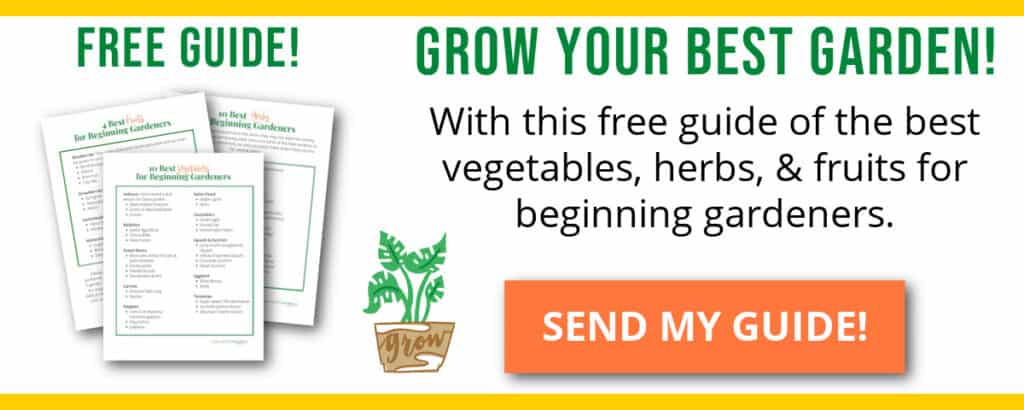
Plant certain types of flowers
Bees have an easier time collecting pollen from single flowers versus double blooms. Daisy-like flowers such as coneflowers, asters, sunflowers, and of course daisies tend to attract bees better than some other types of flowers like roses and peonies.
Zinnias, for instance, come in both single and double varieties. So if you have a choice, choose single blooms to attract the most bees.
However many birds, especially hummingbirds, prefer more of a cone shaped flower such as trumpet honeysuckle or lilies. We have a red salvia out front that our hummingbirds absolutely love.
And when choosing pollinator friendly plants, choose native species. The birds, bees, and butterflies will be attracted to plants that are already in your area versus that unique specimen that you struggle to keep alive each year.
Choose colors of flowers that attract your desired pollinators
Studies have shown that there are some colors of flowers that tend to attract bees more than others. Blue, white, yellow, and purple are the colors of flowers that bees tend to gravitate towards.
While this doesn’t mean that bees won’t like other color flowers, blue, white, yellow, and purple seem to be their favorites. So plant a few of at least one of those colors in your vegetable garden to attract more pollinators.

Hummingbirds tend to favor red flowers. There is a reason those hummingbird feeders are red. (Public Service Announcement – If you use those feeders, be sure to clean them and replace the syrup twice a week. Do NOT use red food coloring. It can be toxic to the birds. The red on the feeder is enough to lure them in.)
Planting a group of red flowers or ones that have a trumpet shape will attract more hummingbirds to your garden.
Plant flowers for year round color
Instead of planting one type of flower that blooms only in the summer, try to plant different varieties that bloom at different times. By planting multiple types of flowers, you will be providing food for the bees and other pollinators all year long.
In the spring plant peas, hellebores (Lenton Rose), bleeding hearts, and lungworts. These blooms will give the bumblebees nectar and pollen early in the year when they first come out of hibernation. (Fun fact: Honeybees don’t hibernate. They huddle together in the winter vibrating to keep warm. On warmer days, they will venture out of their nest.)
It’s usually not too hard to find plants for summer color. Many common flowers and herbs attract pollinators such as salvia, yarrow, oregano, daisies, and bee balm. Even your vegetable garden provides flowers that attract pollinators such as bean blossoms, squash and zucchini flowers, and cucumbers.
For fall flowers, asters and sunflowers work particularly well at attracting pollinators to your garden. As your basil starts to wind down in late summer or early fall, let a plant or two flower and go to to seed. The bees seem to love the basil in my backyard garden.
Don’t Use Pesticides
One way to help keep the pollinators that you do attract is to avoid the use of pesticides. Even many organic pesticides can be harmful to bees. If you must use some form of chemical insecticide, apply it in the afternoon, avoiding the flowers of any blooming vegetables.
And not using pesticides mean not using them on your lawn either. Dandelions and clover provide much needed food for bees and other insects.
Offer a Water Source
Bees and birds need water so offering a water source near your vegetable garden will help attract pollinators and ensure they keep paying your garden a visit. A shallow container of water with some pebbles in it is a great way to provide bees with water. Add a few pebbles to a birdbath so bees and butterflies have a place to land and take a drink.
Butterflies actually prefer slightly muddy water so a lingering mud puddle can be a great source of water and nutrients for them. However they will also drink from the same water source as bees if no puddles are around.
Protect Pollinator’s Habitats
While most people think of bees as living in hives, many bees actually nest in the ground. And contrary to what many people think, about 70% of bees are solitary creatures.
To protect bees habitats, don’t till your garden. Tilling disturbs their nesting spots and can kill the bees. And while as gardeners, we love mulch, try to leave at least a few areas un-mulched. This gives the bees a place to live.
Provide places for birds, bees, and butterflies to hide. An few old rocks or a small brush pile gives pollinators places to live and hide. You can also provide artificial nesting boxes for both birds and bees to keep them nearby.
Plant That Attract Pollinators
There are some plants that just naturally attract more pollinators than others. And its not only flowers that attract them. These lists of fairly common plants will help you decide what to plant to keep those birds, bees, and butterflies coming to your vegetable garden.
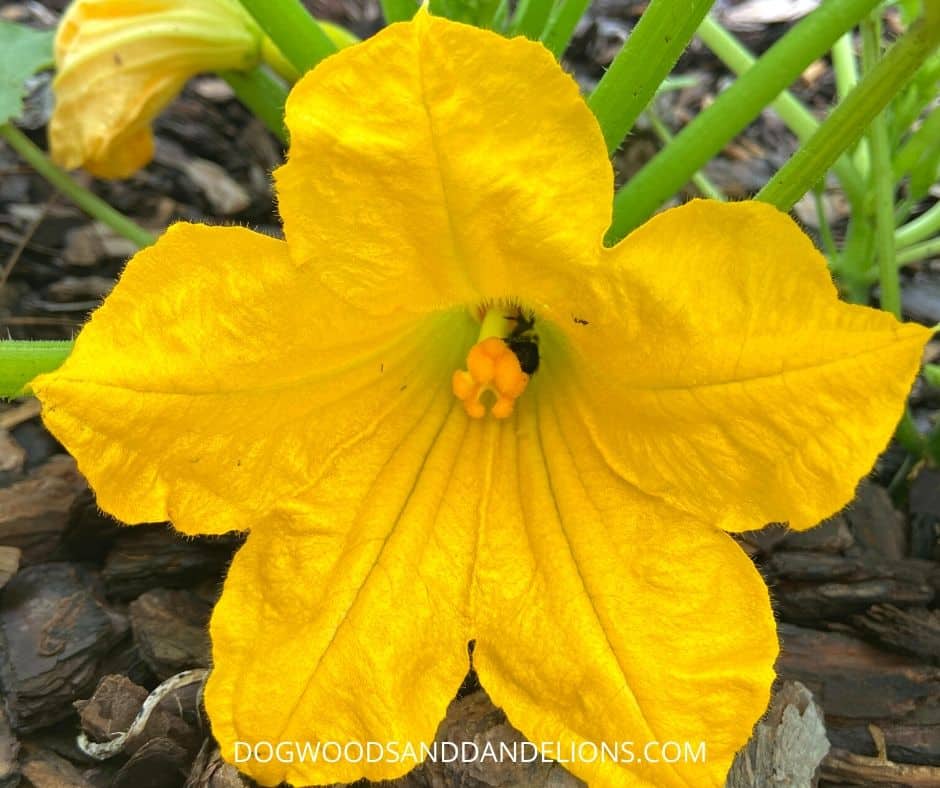
Plants that attract bees
There are lots of flowers, herbs, fruits, and even vegetables that bees really like. You probably already have some of these growing in your garden right now.
- cosmos
- zinnias
- asters
- poppies
- sunflowers
- larkspurs
- bachelor’s button
- yarrow
- black-eyed susan
- coneflower
- bee balm (monarda)
- blanket flower (gaillardia)
- hellebores
- lungwort
- bleeding hearts
- squash
- beans
- cucumbers
- peas
- basil
- dill
- lavender
- oregano
- rosemary
- raspberries
- strawberries
- blueberries
- melons
- dandelion
- clover
Plants that attract butterflies
- aster
- bee balm
- cosmos
- daylilies
- marigolds
- nasturtium
- oregano
- coneflower
- lavender
- yarrow
- zinnias
- sage
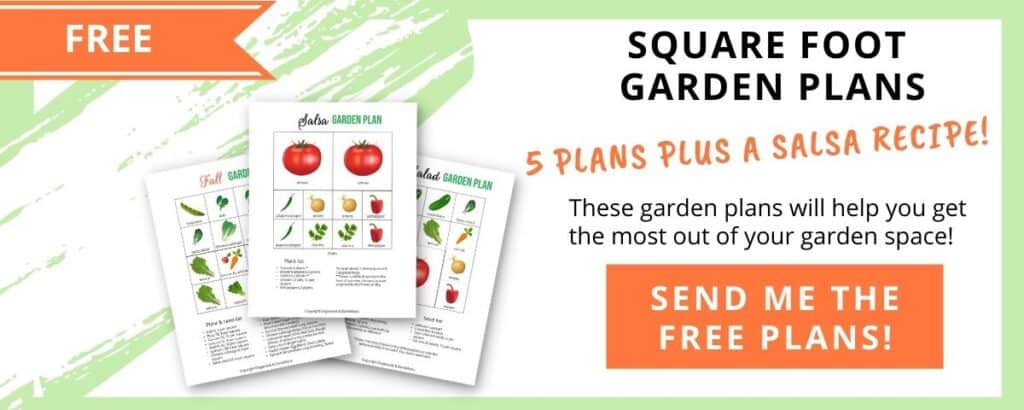
Plants that attract birds
- petunias
- salvia
- impatiens
- azaleas
- pineapple sage
- nicotiana
- weigela
- morning glories
- irises
- lilies
- bee balm
- columbine
- heuchera
- crepe myrtle
- nasturtiums
- sage
- zinnia
- begonia
- dahlia
You will notice that plants such as zinnias, nasturtiums, bee balm, asters, yarrow, and oregano appear on more than one list. These make excellent plants to attract a variety of pollinators to your garden.
In summary, attracting pollinators will likely increase your garden harvest. But the plants you use can also provide food and beauty to your garden. And sitting on the porch in the early morning or late evening as the birds chirp and the bees buzz about is another way to appreciate the beauty of a vegetable garden.
Related Posts
- How to grow squash and zucchini
- How to choose what to grow in your garden
- 4 ways to get rid of the bad bugs in your garden
